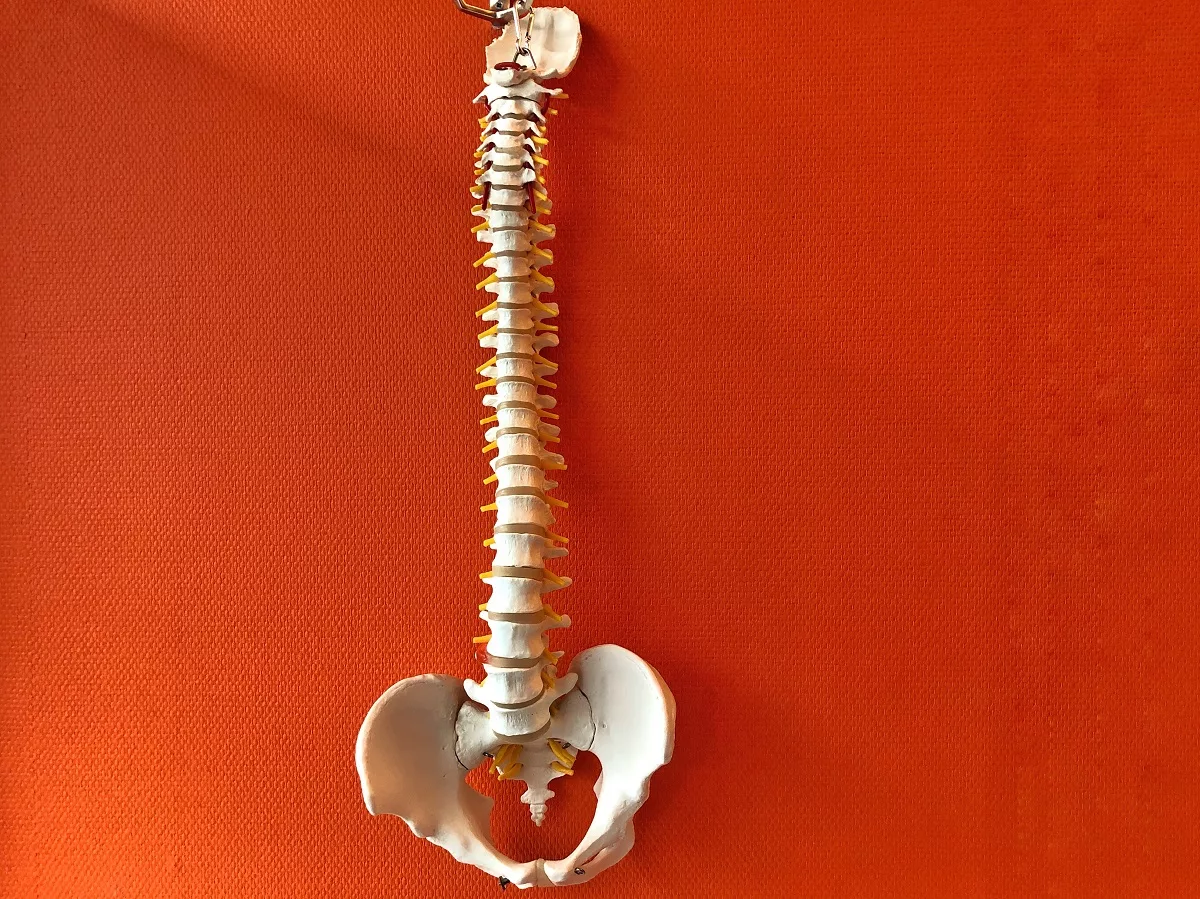A health condition in which damage to the spinal cord occurs is known as spinal cord injury (SCI). Generally, the spinal cord is a bundle of nerves that links the brain with the rest of the body. When damage to these nerves occurs, it may cause problems with sensory signals and control over muscle movement.
This structure of the body is a part of the central nervous system (CNS). CNS looks similar to a multiplane expressway to and from the brain to other components of the nervous system. There are lanes that help the traffic to leave the brain, and separate lanes for traffic that is heading to the brain. Thus, the nerves from the spinal cord are connected to peripheral nerves that branch throughout the body. Furthermore, nerve signals are similar to cars that travel these ways.
Injuries to the spinal cord are similar to things that negatively affect the lanes in the expressway. Unlike real expressways, the spinal cord has no detours, and any damage to it may interrupt the signals that come or go to the brain. In severe cases, the closure can be permanent, which often leads to serious complications (such as paralysis).
Types
In general, healthcare providers organize spinal cord injuries into 2 ways: by the way and location of the injury that impacts the spinal cord. Examples include:
Location
- Cervical spine – This part of the spine is located in the neck (it goes from the skull to about the same level as your shoulders).
- Thoracic spine – In such cases, injuries occur in the upper back below the navel (belly button).
- Lumbar spine – This is the lower back, and it goes to the top of the buttocks.
- Sacral spine – This part of the spine contains nerve roots that are located below the butt and tailbone.
Severity
- Incomplete – This type of severity occurs when closure affects only some lanes, while others remain open. Hence, some abilities may remain intact.
- Complete – In such cases, the closure negatively affects all lanes as no traffic gets through. Therefore, it often causes permanent disabilities (such as paralysis).
Additionally, this body structure has 31 segments, and healthcare professionals use the latter-number combinations to designate them. While letters indicate the section, the number indicates the segment. For instance, C8 indicates the cervical spine cord’s eighth segment.
Generally, this condition is not common. It affects between 250,000 and 500,000 people each year in the entire world. In the U.S., there are approximately 18,000 new traumatic spinal cord injuries every year. Moreover, roughly 78% of new SCI cases are diagnosed in men.
Symptoms
The symptoms appear differently among people who develop this condition. It depends on the type and severity of the condition, age, existing health problems, and other factors. Check below some examples:
Sensory Symptoms
These signals carry information to the brain, which tells it about the world around and about what is happening to the body. Primarily, the spinal cord handles tactile (also known as touch-based) signals. For example, temperature, pressure, vibration, texture, and others. Pain, numbness, and tingling (also called paresthesia) are the most common sensory symptoms.
Motor Symptoms
This type of signal travels from the brain to the muscles. Check below some motor symptoms:
- Spasticity (uncontrollable muscle movements)
- Paralysis (inability to control muscles)
- Muscle weakness
Autonomic Symptoms
This type of signal runs processes that you do not have to think about (also called automatic processes). Check below some autonomic symptoms:
- Urinary or fecal incontinence
- Erectile dysfunction (ED)
- Body temperature or blood pressure disruptions (including hypotension, hypothermia, and others)
- Heart rate irregularities, including bradycardia (slow heart rate)
If you notice any of the previous symptoms, contact your healthcare professional.
Causes
This disorder may occur due to multiple reasons. Check below some of them:
- Motor vehicle crashes – Car or motorcycle accidents are the most common cause of spinal cord injuries, accounting for more than 37% of all SCIs.
- Falls – This cause makes up roughly 31% of all diagnosed SCIs.
- Violence-related injuries – For instance, penetrating injuries from bullets or sharp objects (such as a knife). Approximately 15% of all diagnosed SCIs are caused by violence-related injuries.
- Sports-related injuries – This cause accounts for roughly 8% of all diagnosed spinal cord injuries. However, diving is one of the most common sports-related SCIs.
Risk Factors
Healthcare providers have identified some factors that could increase your risk of developing SCIs. Check below some examples:
- Spine tumors (such as cancer)
- Health conditions that increase the risk of bone fractures (including osteopenia and osteoporosis)
- Cysts or fluid-filled cavities within the spinal cord (also known as syringomyelia)
- Certain infections cause damage to the spinal cord or inflammation.
- Ischemia (lack of blood flow to the spinal cord)
- Congenital spinal diseases (such as spina bifida, myelomeningocele, and others)
- Autoimmune or inflammatory health conditions (including multiple sclerosis, transverse myelitis, neuromyelitis optica, Guillain-Barré syndrome, and others)
- Genetic disorders (such as hereditary spastic paraplegia)
- Electrocution – Damage to the spinal cord may happen if an electric current goes along or near the spine.
What Are The Potential Complications of Spinal Cord Injury?
Those who develop this condition may also experience some complications. Unfortunately, some of them are permanent. One common complication of SCI is a partial or total loss of abilities in the body below the injury (paralysis). Check below some types of paralysis:
- Tetraplegia (also known as quadriplegia) – This type of paralysis negatively affects the body from the neck down.
- Paraplegia – In such cases, paralysis impacts the lower part of the body only. Usually, it occurs due to an injury to the thoracic, lumbar, or sacral segments of the spinal cord.
However, people with SCIs may experience other complications. Examples include:
- Autonomic dysreflexia – This complication often occurs when injuries affect above T6.
- Spinal shock
- Nerve pain (also called neuropathic pain)
- Pneumonia
- Blood clots in the lungs or legs
- Urinary tract infections (UTIs)
- Pressure sores
- Sepsis
- Death
This document does not contain a complete list of SCI complications. In any case, if you develop a spinal cord injury, you can consult with your doctor about ways to reduce the risk of developing further complications.
How to Prevent Spinal Cord Injury?
In most cases, SCIs occur unpredictably. However, you can take some steps to reduce the risk. For example:
- Use safety equipment
- Drive defensively and cautiously
- Try to prevent falls
- Do not misuse prescription medicines, recreational drugs, or alcohol
- You should never dive or jump into water where you cannot see the bottom
Diagnosis
Usually, this condition is diagnosed by performing one or more of the following tests. Physicians may also ask some questions about the medical history and symptoms. Check below some examples:
- A physical examination – Doctors often perform it to check for abnormalities linked to the disease.
- A neurological examination – During this procedure, doctors will test your nervous system abilities. For example, moving the limbs, testing strength, sensations, reflexes, and others.
- Imaging tests – These tests are used to get detailed images of the spinal cord. They often perform CT (computerized tomography) scans or MRI (magnetic resonance imaging) scans.
- Diagnostic tests – These include nerve conduction tests, electromyography, and others. Physicians usually perform these tests to measure the electrical signals reaching the muscles. It may help identify the exact location of nerve or spinal cord damage.
Treatment
Usually, physicians recommend different treatments for people with a spinal cord injury. It depends on the cause and severity of the condition, existing health problems, age, and preferences. In any case, a suspected trauma-related SCI is considered a medical emergency every time. However, there are also other causes that are medical emergencies. These include infections, ischemia, and autoimmune disorders (such as Guillain-Barré syndrome).
Trauma-Related Spinal Cord Injury Treatments
Check below some treatments that people often get in a hospital:
- Surgery – This is one of the main treatments for people with SCIs. It helps relieve pain and repair damage from the injury.
- Medicines – Physicians often prescribe corticosteroids or steroids to reduce inflammation.
- Traction – This option helps minimize movement around the SCI.
- Splints, braces, halos, or other supportive devices – These are similar to traction because they help keep in place the area around the SCI.
Non-traumatic Spinal Cord Injury Treatments
The treatments for this type of SCI also vary widely among patients. Discuss it with your healthcare professional for more details.
Additional Care
In most cases, people with SCI need additional care for weeks or even months after injury. Sometimes, people may need the following options for years. For example:
- Speech, occupational, and physical therapy
- Some people may need to go to a mental healthcare professional to manage an increased risk of depression or suicidal thoughts.
Frequently Asked Questions
What happens if the spinal cord gets injured?
Usually, damage to the spinal cord causes paralysis in most of the body. It often affects all limbs (tetraplegia or quadriplegia). When injury causes damage to the lower part of the spinal cord, you may develop paralysis in the lower body and legs (paraplegia).
What are the signs of a spinal cord injury?
Check below some emergency symptoms:
- Weakness and poor coordination
- Extreme back pain
- Increased pressure in the neck, head, or back
- Difficulty with balance and walking, or breathing
- Numbness, tingling, or loss of feeling in the fingers, hands, feet, or toes
Immediately call 911 or go to the nearest emergency room (ER) if any of the previous symptoms occur.
What is the life expectancy of someone with a spinal cord injury?
In general, life expectancy for people with SCI fluctuates. It depends on several factors, including the severity of injury, age, overall health, ventilator dependence, and others. For instance, if a person gets a spinal cord injury at 20 years old and he/she is not ventilator-dependent, the life expectancy is around 43 years old, according to the National Institutes of Health (NIH). Ask your healthcare provider if you have additional questions.




